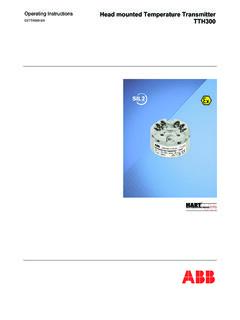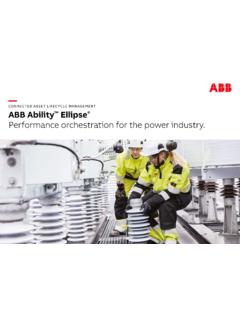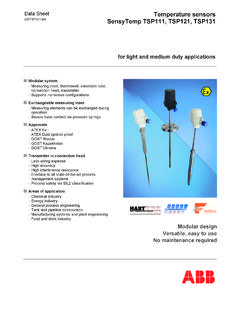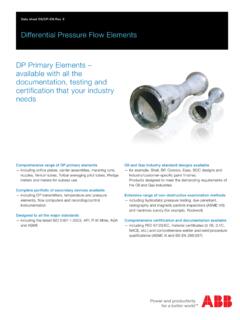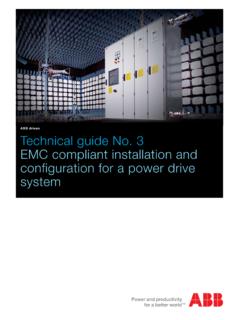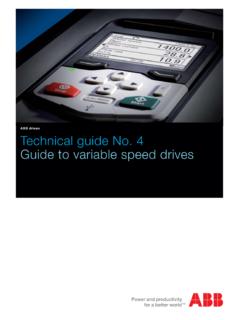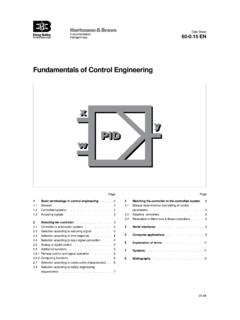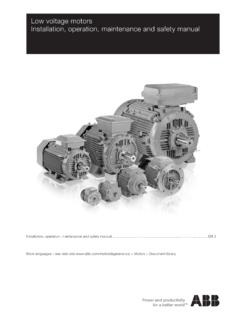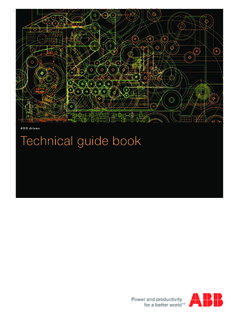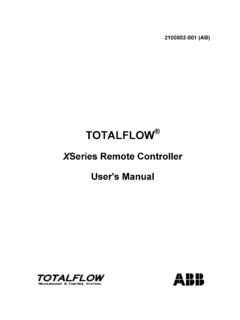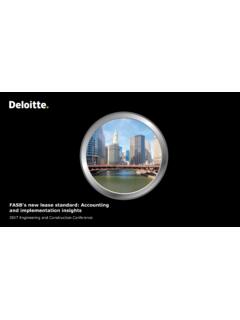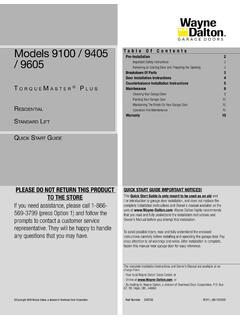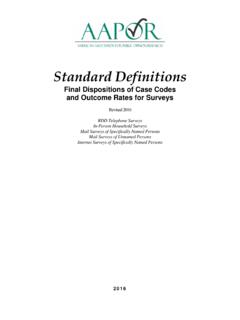Transcription of 1 Technical Overview and Benefits of the IEC 61850 ...
1 1 Abstract-- Legacy substation automation protocols and architectures typically provided basic functionality for power system automation and were designed to accommodate the Technical limitations of the networking technology available for implementation. There has recently been a vast improvement in networking technology that has changed dramatically what is now feasible for power system automation in the substation. Technologies such as switched Ethernet, TCP/IP, high-speed wide area networks, and high-performance low-cost computers are providing capabilities that could barely be imagined when most legacy substation automation protocols were designed. IEC61850 is an important new international standard for substation automation that will have a very significant impact on how electric power systems are designed and built for many years to come.
2 IEC61850 is a part of the International Electrotechnical Commission s (IEC) Technical Committee 57 (TC57) architecture for electric power systems. The model -driven approach of the TC57 standards , including IEC61850, is an innovative approach that requires a new way of thinking about substation automation that will result in very significant improvements in both costs and performance of electric power systems. I. COMMUNICATION SYSTEM NEEDS ommunication has always played a critical role in the real-time operation of the power system. In the beginning, the telephone was used to communicate line loadings back to the control center as well as to dispatch operators to perform switching operations at substations. Telephone-switching based remote control units were available as early as the 1930 s and were able to provide status and control for a few points.
3 As digital communications became a viable option in the 1960 s, data acquisition systems (DAS) were installed to automatically collect measurement data from the substations. Since bandwidth was limited, DAS communication protocols were optimized to operate over low-bandwidth communication channels. The cost of this optimization was the time it took to configure, map, and document the location of the various data bits received by the protocol. As we move into the digital age, literally thousands of analog and digital data points are available in a single Intelligent Electronic Device (IED) and communication bandwidth is no longer a limiting factor. Substation to master communication data paths operating at 64,000 bits per second are now commonplace with an obvious migration path to much higher rates.
4 With this migration in technology, the cost component of a data acquisition system has now become the configuration and documentation component. Consequently, a key component of a communication system is the ability to describe themselves from both a data and services (communication functions that an IED performs) perspective. Other key requirements include: High-speed IED to IED communication Networkable throughout the utility enterprise High-availability Guaranteed delivery times standards based Multi-vendor interoperability Support for Voltage and Current samples data Support for File Transfer Auto-configurable / configuration support Support for security Given these requirements, work on a next generation communication architecture began with the development of the Utility Communication Architecture (UCA) in 1988.
5 The result of this work was a profile of recommended protocols for the various layers of the International standards Organization (ISO) Open System Interconnect (OSI) communication system model . This architecture resulted in the definition of a profile of protocols, data models, and abstract service definitions that became known as UCA. The concepts and fundamental work done in UCA became the foundation for the work done in the IEC Technical Committee Number 57 (TC57) Working Group 10 (WG10) which resulted in the International Standard IEC 61850 Communication Networks and Systems in Substations. II. SCOPE AND OUTLINE OF IEC 61850 The stated scope of IEC 61850 was communications within the substation. The document defines the various aspects of the substation communication network in 10 major sections as shown in Table 1 below.
6 Technical Overview and Benefits of the IEC 61850 Standard for Substation Automation C Ralph Mackiewicz SISCO, Inc. Sterling Heights, MI USA 2 TABLE I STRUCTURE OF THE IEC 61850 STANDARD Part # Title 1 Introduction and Overview 2 Glossary of terms 3 General Requirements 4 System and Project Management 5 Communication Requirements for Functions and Device Models 6 Configuration Description Language for Communication in Electrical Substations Related to IEDs 7 Basic Communication Structure for Substation and Feeder Equipment - Principles and Models - Abstract Communication Service Interface (ACSI) - Common Data Classes (CDC) - Compatible logical node classes and data classes 8 Specific Communication Service Mapping (SCSM) - Mappings to MMS(ISO/IEC 9506 Part 1 and Part 2) and to ISO/IEC 8802-3 9 Specific Communication Service Mapping (SCSM)
7 - Sampled Values over Serial Unidirectional Multidrop Point-to-Point Link - Sampled Values over ISO/IEC 8802-3 10 Conformance Testing Parts 3, 4, and 5 of the standard start by identifying the general and specific functional requirements for communications in a substation (key requirements stated above). These requirements are then used as forcing functions to aid in the identification of the services and data models needed, application protocol required, and the underlying transport, network, data link, and physical layers that will meet the overall requirements. The major architectural construct that 61850 adopts is that of abstracting the definition of the data items and the services, that is, creating data items/objects and services that are independent of any underlying protocols.
8 The abstract definitions then allow mapping of the data objects and services to any other protocol that can meet the data and service requirements. The definition of the abstract services is found in part of the standard and the abstraction of the data objects (referred to as Logical Nodes) is found in part In as much as many of the data objects are made up of common pieces (such as Status, Control, Measurement, Substitution), the concept of Common Data Classes or CDC was developed which defined common building blocks for creating the larger data objects. The CDC elements are defined in part Given the data and services abstract definitions, the final step was one of mapping the abstract services into an actual protocol. Section defines the mapping of the abstract data object and services onto the Manufacturing Messaging Specification MMS and sections and define the mapping of the Sample Measured Values (unidirectional point-to-point and bi-directional multipoint accordingly) onto an Ethernet data frame.
9 The document defines what has become known as the Process Bus. From a system perspective, there is a significant amount of configuration that is required in order to put all the pieces together and have them work. In order to facilitate this process and to eliminate much of the human error component, an XML based Substation Configuration Language (SCL) was defined in part 6. It allows the formal description of the relations between the substation automation system and the substation (switchyard). At the application level, the switchyard topology itself and the relation of the switchyard structure to the SAS functions (logical nodes) configured on the IEDs can be described. Each device must provide an SCL file that describes the configuration of itself. Although the scope of 61850 was originally focused inside the substation, discussions are underway to look at defining 61850 for the Substation to Master communication protocol (already in service in several installations).
10 In addition, applications are in service that uses various components of 61850 for wide area substation-to-substation communication. Finally, part 10 of the document defines a testing methodology in order to determine conformance with the numerous protocol definitions and constraints defined in the document. The rest of this paper goes into some focused details of the various parts of the IEC 61850 standard. III. MODELING APPROACH Legacy protocols have typically defined how bytes are transmitted on the wire. However, they did not specify how data should be organized in devices in terms of the application. This approach requires power system engineers to manually configure objects and map them to power system variables and low-level register numbers, index numbers, I/O modules, etc.
